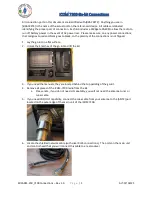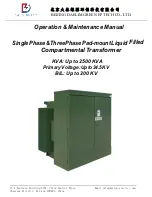
GB
3. Installation instructions
2279453 08/2009 GB/D/F
WIKA Operating Instructions Differential Pressure Transmitter DELTA-trans
5
3. Installation instructions
Installation arrangement
The pressure transmitter should be installed and operated without exposure
to vibration. It is common practise to install the pressure transmitter fitted to
an isolating device to enable replacement while the system is pressurised
and to isolate the transmitter when reading is not required.
Test connector
Local safety codes such as those for pressure or steam vessels may specify
isolating devices to enable on-site testing of the pressure transmitter.
Mounting provisions
If the pressure system or tailpipe is not rigid enough to accept the weight of
the transmitter, or capable of withstanding any vibrations present, the trans-
mitter should be wall-mounted using a suitable bracket.
Effects of temperature
The operating temperature of the pressure transmitter, resulting from the
effects of the pressure medium, ambient temperatures and possible radiated
heat, must not exceed the temperature range the pressure transmitter is
intended for. Suitably shaped tailpipes or syphons with water filling may be
used to separate the pressure transmitter and its isolating device from hot
pressure media.
Overload protection for pressure elements
Should the measuring media be subject to rapid pressure fluctuations or
there is a possibility of pressure surges, these must not be allowed to act
directly on the pressure element. The effect of any pressure surges must
be restricted, for example, by fitting integral restrictor screws (to reduce the
bore in the pressure connection) or by using adjustable snubber devices.
Pressure test connection
The pressure test connection, with a sufficiently large bore (
≥
6 mm diame-
ter), should be arranged, as far as possible, over a shut-off device, in a
position where the accuracy of reading will not be affected by the flow of the
media being measured. The piping between the pressure test connection
and the pressure transmitter should have an inner diameter large enough to
avoid blockages or delays in pressure transmission. It should also not have
any sharp bends. It is recommended that it is laid with a continuous incline
of approx. 1:15.






































